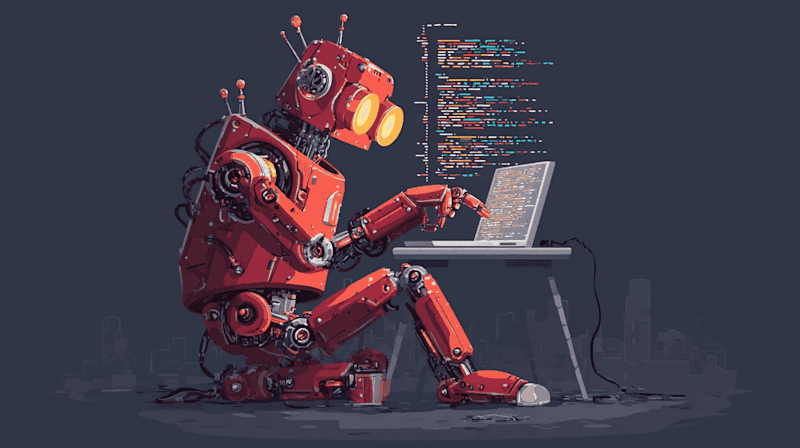The Evolution of Cybersecurity: From Trust to AI-Powered Threats
2 Sources
2 Sources
[1]
Lessons from cyberattacks | bobsguide
An analysis of recent cyberattacks, including the MOVEit exploits and rise of deepfakes, reveals evolving ransomware tactics. Organizations must prioritize vulnerability management, enhance ransomware defenses, and strengthen security awareness training to mitigate these growing threats. The cybersecurity landscape is dynamic, demanding constant vigilance and adaptation. For businesses globally, understanding the nuances of recent cyberattacks is paramount. This analysis dives into recent case studies, dissecting trends and offering practical recommendations. Several organizations provide crucial insights into the evolving threat landscape: A review of recent incidents reveals recurring attack vectors and impacts: Case study links (This table is a representative sample; numerous other incidents occur across sectors.) Unpacking the Evolving Threat Landscape The cybersecurity landscape is in constant flux, with new threats and attack vectors emerging regularly. Analyzing recent incidents reveals several key trends that demand attention: 1. The Sophistication of Vulnerability Exploitation: Attackers are not simply targeting any vulnerability; they are increasingly focused on exploiting vulnerabilities in internet-facing systems and applications, often leveraging zero-day exploits for maximum impact. The MOVEit attacks serve as a stark reminder of this trend. This highlights the need for organizations to go beyond basic vulnerability scanning and patching. Proactive measures such as penetration testing, red teaming exercises, and continuous security monitoring are crucial to identify and mitigate vulnerabilities before they can be exploited. 2. Ransomware's Multifaceted Approach: Ransomware has evolved into a multi-pronged threat. While encryption remains a core tactic, attackers are increasingly exfiltrating sensitive data before deploying ransomware, adding the threat of public exposure to their arsenal. This tactic puts pressure on organizations even if they have robust backups. To combat this, organizations need to adopt a holistic approach to ransomware defense, encompassing data backups, incident response plans, and security awareness training, along with data loss prevention (DLP) solutions and network segmentation to limit the impact of data exfiltration. 3. The Persistent Human Element: Despite technological advancements, human error and manipulation remain significant factors in cybersecurity breaches. Phishing attacks, social engineering, and insider threats continue to plague organizations. This underscores the critical importance of comprehensive security awareness training that goes beyond simple awareness and focuses on behavioral change. Simulations, gamification, and interactive training modules can help employees recognize and respond to threats effectively. 4. The Expanding Threat Surface of Supply Chains: Supply chain attacks are on the rise, exploiting the interconnectedness of modern businesses. Attackers target vulnerabilities in third-party vendors and suppliers to gain access to their ultimate targets. This emphasizes the need for robust vendor risk management programs that include thorough security assessments, contractual obligations for security practices, and ongoing monitoring of vendor security posture. 5. The Rise of AI-Powered Attacks: Attackers are leveraging artificial intelligence (AI) and machine learning (ML) to automate attacks, evade detection, and increase their effectiveness. AI-powered attacks can generate sophisticated phishing lures, create polymorphic malware, and even automate the discovery of vulnerabilities. To counter this, organizations must adopt AI-driven security tools that can analyze vast amounts of data, identify anomalies, and respond to threats in real-time. 6. Deepfakes: The New Frontier of Deception: Deepfake technology, which uses AI to create realistic fake videos or audio, is rapidly emerging as a powerful tool for cybercriminals. Deepfakes can be used for social engineering, spreading misinformation, manipulating individuals, and damaging reputations. Organizations need to be aware of this threat and develop strategies to detect and mitigate the risks of deepfakes, including media forensics and authentication technologies. 7. Emerging Threats on the Horizon: Looking ahead, cybersecurity leaders anticipate a complex threat landscape shaped by several factors: These trends underscore the need for organizations to adopt a proactive and adaptive approach to cybersecurity, continuously assessing their risk profile, implementing robust security controls, and staying informed about the evolving threat landscape. In light of these trends, organizations need to take proactive steps to strengthen their cybersecurity defenses: 1. Prioritize Vulnerability Management Implement a robust vulnerability management program that includes: 2. Enhance Ransomware Defenses Develop a comprehensive ransomware preparedness plan that includes: 3. Strengthen Security Awareness Training Invest in comprehensive security awareness training that focuses on behavioral change and includes: 4. Mitigate Supply Chain Risks Implement a robust vendor risk management program that includes: 5. Embrace AI-Powered Security Incorporate AI and ML technologies into your security strategy to: 6. Address the Deepfake Threat Develop strategies to detect and mitigate the risks of deepfakes, including: 7. Prepare for Emerging Threats Stay informed about emerging threats and adapt your security strategy accordingly: A Continuous Commitment Cybersecurity is not a one-time fix but an ongoing commitment. By understanding the evolving threat landscape, implementing robust security measures, and fostering a culture of security awareness, UK and US businesses can mitigate risks and protect their valuable assets. Continuous learning and adaptation are essential in this dynamic environment.
[2]
Cybersecurity's journey, and what it means for today | bobsguide
From trusting networks to AI-powered threats, cybersecurity has evolved rapidly, demanding constant vigilance and adaptation. This journey through its history highlights key milestones and the lessons learned to fortify our digital future. Cybersecurity is not a static destination but a continuous journey. It's about adapting to the ever-shifting landscape of digital threats, understanding the historical context, and anticipating future challenges. This article, in conjunction with the accompanying animated timeline video, aims to provide a comprehensive overview of this dynamic field, offering insights and analyses relevant to professionals navigating the complexities of digital security. The internet's inception was marked by a spirit of collaboration and trust, primarily within academic and research circles. This nascent environment, largely devoid of robust security measures, inadvertently sowed the seeds for future vulnerabilities. The Morris Worm incident served as a stark reminder of the internet's inherent vulnerabilities. This self-replicating program, designed as an experiment, ended up crippling thousands of machines. It exposed the interconnected nature of the internet and the potential for widespread disruption. As the internet expanded, so did the opportunities for manipulation. The late 1990s saw the rise of phishing, a social engineering tactic that preys on human psychology. The 2000s saw a shift. Cybercrime became organized, driven by financial gain. We saw the rise of botnets, malware designed to steal financial data, and large-scale data breaches. Ransomware dominated the 2010s. This type of malware encrypts data and demands a ransom for its release. The WannaCry attack in 2017, which hit organizations worldwide, including the UK's NHS, demonstrated the devastating impact of these attacks. Today, we're in the age of AI, and it's changing the cybersecurity landscape. AI is being used to create more sophisticated attacks, but also to enhance our defenses. Deepfakes, AI-generated synthetic media, are a growing threat. They can be used to manipulate public opinion, spread disinformation, and impersonate individuals, creating significant challenges for authentication and verification. The future of cybersecurity is full of unknowns. Emerging threats like supply chain attacks, IoT vulnerabilities, and the potential impact of quantum computing require proactive planning and adaptation. In this ever-evolving landscape, vigilance is key. Organizations and individuals must prioritize cybersecurity awareness, invest in robust defenses, and adapt to new challenges. Cybersecurity is a shared responsibility. Organizations must foster a culture of security awareness, empowering individuals to take an active role in protecting themselves and their data. By working together, we can create a more secure digital world. Professionals need to stay abreast of the latest threats and vulnerabilities. This requires continuous learning and professional development. It is not just about preventing attacks, but also about building resilience and ensuring business continuity in the face of inevitable incidents. Organizations need to develop comprehensive incident response plans and invest in cyber insurance to mitigate the financial impact of cyberattacks.
Share
Share
Copy Link
An exploration of cybersecurity's journey, highlighting key milestones and emerging threats like AI-powered attacks and deepfakes, emphasizing the need for constant vigilance and adaptation in the digital security landscape.

The Journey of Cybersecurity: From Trust to AI-Powered Threats
The landscape of cybersecurity has undergone a dramatic transformation since the inception of the internet. What began as a trusted network for academic and research collaboration has evolved into a complex battleground of digital threats and sophisticated defense mechanisms
1
.Early Days and Wake-Up Calls
The internet's early days were characterized by a spirit of openness and trust. However, this naive approach was shattered by incidents like the Morris Worm in 1988, which exposed the vulnerabilities inherent in interconnected systems. This event served as a wake-up call, highlighting the potential for widespread disruption in the digital realm
1
.The Rise of Organized Cybercrime
As the internet expanded, so did the opportunities for malicious actors. The late 1990s saw the emergence of phishing attacks, preying on human psychology. The 2000s marked a shift towards organized cybercrime, driven by financial motives. This era witnessed the proliferation of botnets, financial data theft, and large-scale data breaches
1
.Ransomware: A Dominant Threat
The 2010s were dominated by ransomware attacks. The WannaCry attack in 2017, which affected organizations worldwide, including the UK's NHS, demonstrated the devastating potential of these threats. Ransomware continues to evolve, with attackers now employing a multi-pronged approach that includes data exfiltration before encryption
2
.The AI Era: New Threats and Defenses
Today, we find ourselves in the age of artificial intelligence (AI), which is reshaping the cybersecurity landscape. While AI is being leveraged to enhance defensive capabilities, it's also being exploited by attackers to create more sophisticated threats
1
.Deepfakes: The New Frontier of Deception
One of the most concerning emerging threats is the rise of deepfakes. These AI-generated synthetic media can be used to manipulate public opinion, spread disinformation, and impersonate individuals. The potential for deepfakes to be used in social engineering attacks and reputation damage is significant, presenting new challenges for authentication and verification
2
.Related Stories
Evolving Attack Vectors
Recent cyberattacks have highlighted several key trends:
- Sophisticated vulnerability exploitation, particularly in internet-facing systems
- Supply chain attacks, exploiting the interconnectedness of modern businesses
- AI-powered attacks that can automate processes, evade detection, and increase effectiveness
2
Strengthening Cybersecurity Defenses
To combat these evolving threats, organizations need to adopt a proactive and adaptive approach:
- Implement robust vulnerability management programs
- Enhance ransomware defenses with comprehensive preparedness plans
- Strengthen security awareness training, focusing on behavioral change
- Mitigate supply chain risks through vendor risk management
- Embrace AI-powered security solutions for real-time threat detection and response
- Develop strategies to detect and mitigate deepfake risks
2
The Future of Cybersecurity
As we look to the future, the cybersecurity landscape continues to evolve. Emerging threats such as quantum computing vulnerabilities and IoT exploits loom on the horizon. Organizations and individuals must prioritize cybersecurity awareness, invest in robust defenses, and adapt to new challenges
1
.Cybersecurity is not a destination but a continuous journey. It requires vigilance, adaptation, and a commitment to ongoing learning and professional development. By understanding the historical context and anticipating future challenges, we can work towards creating a more secure digital world.
References
Summarized by
Navi
[1]
Related Stories
Recent Highlights
1
Google launches Gemini 3 Flash as default AI model, delivering speed with Pro-grade reasoning
Technology

2
OpenAI launches GPT Image 1.5 as AI image generator war with Google intensifies
Technology

3
OpenAI launches ChatGPT app store, opening doors for third-party developers to build AI-powered apps
Technology








